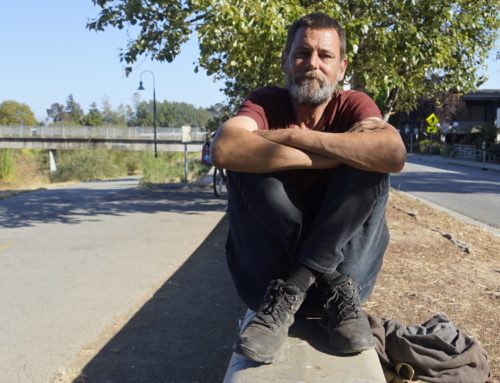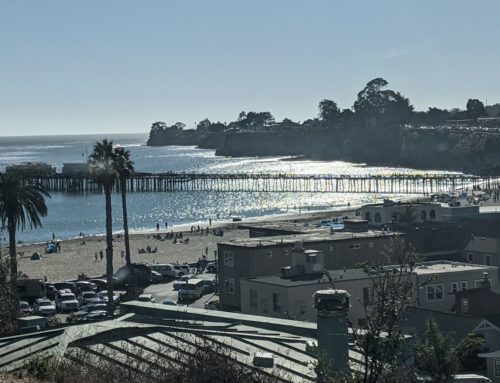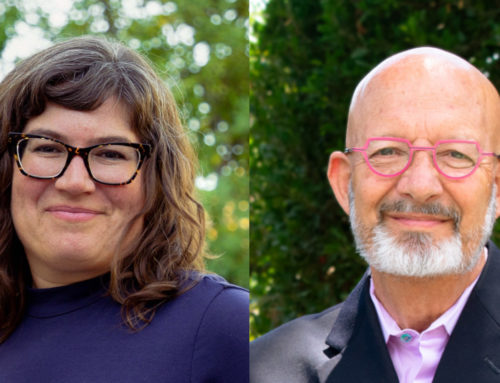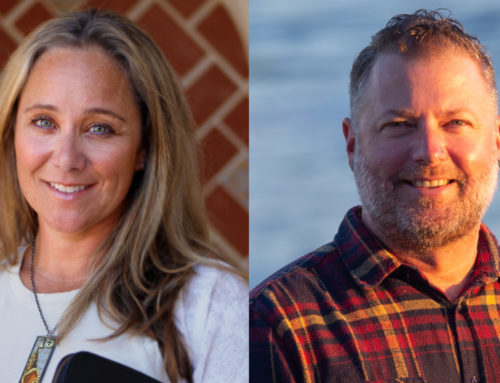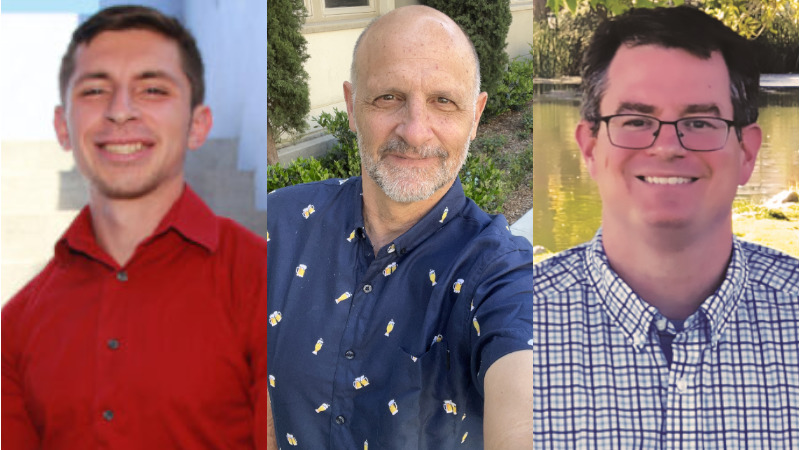
From left, Santa Cruz City Council candidates Hector Marin, Gregory Hyver and Scott Newsome vie for the District 4 Santa Cruz City Council seat on the Nov. 8 ballot. (Contributed photos)
Read Santa Cruz Local's Election Guide
We meet three candidates for Santa Cruz City Council: Hector Marin, Gregory Hyver and Scott Newsome. They’re running for the District 4 seat on the Nov. 8 ballot.
You’ll vote in the District 4 council race if you live in these areas:
- Downtown.
- Beach Flats.
- Part of the Upper Westside, east of Bay Street and south of High Street.
- Areas along Mission Street generally east of Laurent Street.
We explain what a council member does. Then we press the candidates on the issues important to Santa Cruz residents.
Related stories
- Santa Cruz Local’s Election Guide
- Santa Cruz Local’s Election Guide for Santa Cruz City Council
- Podcast: Ahead of Nov. 8 local election, Santa Cruz County residents share priorities (Sept. 27, 2022)
- Santa Cruz voters list priorities for candidates (Sept. 26, 2022)
- Watsonville voters ask for youth and family activities, rent help (Sept. 26, 2022)
- Capitola voters discuss their priorities for Nov. 8 local election (Sept. 26, 2022)
- Scotts Valley voters share priorities for local election (Sept. 26, 2022)
Transcript
ADVERTISEMENT: This episode of Santa Cruz Local is sponsored by UC Santa Cruz. UC Santa Cruz is proud to help lead the international team that produced the first complete, gapless sequence of a human genome. With this effort, UC Santa Cruz is supporting important advancements to understand genetic diseases, human diversity, and evolution. UC Santa Cruz: The real change is us.
[THEME MUSIC]
KMG: I’m Kara Meyberg Guzman. This is Santa Cruz Local.
In today’s episode we’ll meet three candidates for Santa Cruz City Council. They’re running for the District 4 seat. If you live in District 4, you’ll see them on the Nov. 8 ballot.
This seat is new. Santa Cruz now has district elections for city council. That means the city is divided into 6 geographical districts. Voters from each district will choose a representative from their district. in this election, voters across the city will also choose a mayor who represents the whole city.
You’ll vote in the District 4 council race if you live in these areas:
- Downtown.
- Beach Flats.
- Part of the Upper Westside, east of Bay Street and south of High Street.
- And areas along Mission Street generally east of Laurent Street.
I’ll put a link to the District 4 map in the show notes.
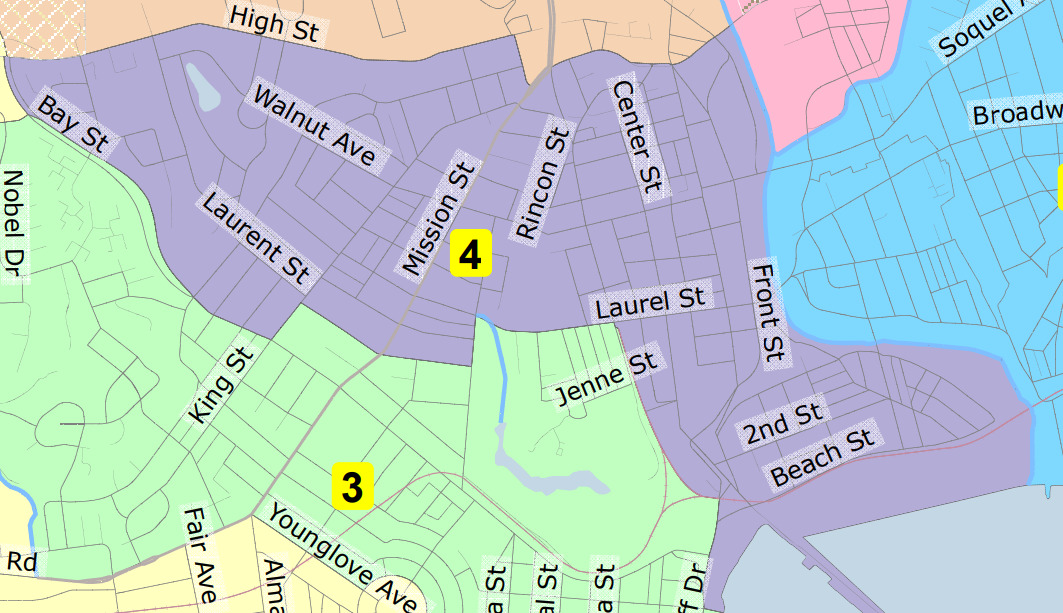
The purple area shows City of Santa Cruz District 4. (City of Santa Cruz)
A seat on the city council is powerful. The council creates the city’s laws. They decide how the city spends taxpayer money. They also oversee the city’s functions, like the police department and the water department.
The council role is a part-time job. The salary is about $20,000 a year. The job often takes 20 hours a week, sometimes more.
Now let’s meet the three candidates: Hector Marin, Gregory Hyver and Scott Newsome.
Hector Marin is 25. He works as a consultant for local nonprofits. He works on racial equity. Marin graduated from UC Santa Cruz last year. He worked with service workers as part of a union there.
Here’s why Hector Marin is running. He uses an acronym for Black, Indigenous and people of color.
HECTOR MARIN: In my efforts of engaging with the community, everyone has voiced their concerns over homelessness, and what more can we do to provide ample solutions to really help resolve the homelessness crisis. I want to seek and ensure that there’s support system programs in which homeless folks are assisted, I would also want to ensure that there is BIPOC representation within District Four of Downtown because downtown district four is really diverse. So we need someone that can that has those lived experiences and that has that diversity not only in ethnicity, but also in values.
KMG: Gregory Hyver is 62. He works as a property manager and a real estate agent. He recently started a nonprofit group. It aims to defend free speech. Previously, he worked in tech in Silicon Valley.
We asked Gregory Hyver why he’s running. He told us about his belief that “there is a systemic suppression of certain political views in city government.” He also told us how he was motivated by a flight path change in Santa Cruz County. That was in 2015. He has a second home in the Soquel Hills and he was affected by the noise. He said the experience made him lose faith in representative democracy. Here’s Gregory Hyver.
GREGORY HYVER: I wanted to really find a way to take power away from government because I felt they had too much power to do, you know, to do whatever they want. And I see government power as continuing to encroach on our individual choices. So my two missions basically are to allow every voice to be heard again in the community, and also to take some power back and give it to the people.
KMG: Scott Newsome is 40. He is expected to start a lecturer position at UC Santa Cruz this spring. It’s in political science. Newsome has studied economic inequality and how the U.S. government responds to recessions. He received a doctorate in politics from UC Santa Cruz in 2020.
Here’s why Scott Newsome is running.
SCOTT NEWSOME: The city is currently in a transitional period, both politically and economically. And there are several issues that need to be addressed, such as housing, economic recovery, and homelessness, that affect the community. And I want to get involved, build consensus and help provide a steady hand during these transitions and when working on these issues.
KMG: Santa Cruz Local has much more information about each candidate on our Election Guide. It’s at SantaCruzLocal.org/Vote.
Our team wants to press the candidates on issues important to Santa Cruz residents. That’s why this year, we interviewed and surveyed 140 Santa Cruz residents. We asked them what they needed from local government.
The top themes we heard were:
- A need for affordable housing.
- A desire for solutions to homelessness.
- And a need for help with rent.
Let’s hear what the candidates said about affordable housing. It was the top theme that we heard from residents.
Some voters told us there is too much market-rate housing being built and not enough affordable housing. Do you agree? How should the city council handle market-rate housing proposals?
Here’s Hector Marin. When he says VLO and ELO, he means very-low income and extremely-low income housing.
HECTOR MARIN: Yes, of course, I definitely agree with that. Because what’s going on right now within District 4 is that there is that overabundance of market rate development housing, not only is that going within District 4, but also throughout the city, so there is that issue. Correct? According to my sources, there is an overabundance of development of market-rate housing, and there is not ample development of VLO and ELO housing as well. Even the state says that Santa Cruz is not meeting the quota of developing more VLO or ELO housing, right. So we need to ensure that we sort of take those critiques and that we build VLO and non-VLO housing, and ensure that that is built for the community.
I would love to work with developers in terms of building more affordable housing throughout Santa Cruz. And our line of communication should be open as a city council to work with these developers. But we should also keep that same energy for nonprofit organizations who seek to do that same thing as well. And we need to ensure that we hold real estate developers accountable whenever VLO units or ELO units are not being provided for the city.
KMG: Here’s Gregory Hyver. Same question. Some voters told us there is too much market-rate housing being built and not enough affordable housing. Do you agree? How should the city council handle market-rate housing proposals?
GREGORY HYVER: I wouldn’t know the answer to this question without asking additional questions. The first would be whether launching an affordable housing program would be a net benefit or net cost to the existing community. If a net benefit, then we deploy whatever program works. If a net loss, keep the free market.
Some of the costs that concern me would be those related to how adding more housing units in general will impact our limited infrastructure. For example, water rationing. Santa Cruz also has major crime, drug problem, traffic issues and environmental issues that haven’t even been addressed with the existing population. What about work for these people coming in? Well, that’s well, let’s draw more individuals into Santa Cruz trying to locate affordable housing? Will develop or show interest in these projects as you increase the percentages of affordable housing units? On the benefit side, would the program place individuals due to some community priority like attracting teachers, firemen and women and police officers? Or will it be income based or first come first serve? So things like that would need to be answered.
There are so many open questions that I have because I don’t have access to this information yet. I think it would be a mistake to give a black-and-white answer at this point. But I’ve lived in Los Altos Hills or Los Altos most of my life. I’ve seen what that kind of development does to a community. And I just don’t want to see that happening to Santa Cruz, the same thing where all of these new developments start to change this unique special character that Santa Cruz has.
KMG: Here’s Scott Newsome. Same question. Some voters told us there is too much market-rate housing being built and not enough affordable housing being built. Do you agree? How should the city council handle market-rate housing proposals?
SCOTT NEWSOME: We’ve made good progress On the goal of building more housing, there are currently 2,100 homes and a pipeline to be built, and 600 of those homes will be affordable homes. So 29% of all homes either in construction or in the planning phase of being built will be affordable with a good portion of those homes being either low-income or very low-income affordable housing.
And the fourth district has made very good progress on this goal to date — more than 1,200 homes scheduled to be built in the downtown core, which is the heart of District Four in the city of Santa and the city of Santa Cruz. And more than 400 of these homes will be affordable housing. So 33% of the homes planned for the fourth district will be affordable housing. And many of those units wouldn’t exist except for the fact that they’re required of market-rate projects.
I understand the concerns with the balance between affordable housing and market-rate housing being built. However, there is a need for market-rate housing in Santa Cruz. And there are about 700 housing vouchers in the works with the Housing Authority of Santa Santa Cruz (County). And those vouchers can help a low-income tenant secure a market-rate home. So some of the market-rate housing could be attained by those in need of affordable housing.
KMG: If you’re registered to vote in Santa Cruz, you should have received your ballot by mail. If you need to register, or need to get a ballot, find details on Santa Cruz Local’s Election Guide. Visit SantaCruzLocal.org/Vote. Our Election Guide also has much more about each candidate and the issues.
We do this work because we love Santa Cruz County. We want our Election Guide to be useful for you. We believe our local democracy works better when everyone is watching and involved, especially with elections.
This work takes time and money. All of Santa Cruz Local’s work is free. We are supported by our members. Our members donate starting at $19 a month or $199 a year.
I invite you to support Santa Cruz Local with a membership today. Go to SantaCruzLocal.org/Membership. The link is in our show notes.
If you use the Patreon app, you can also donate to us there. Just search for Santa Cruz Local.
[MUSIC]
Thank you to all our members. Thank you especially to our highest-level members.
- Elizabeth and David Doolin
- Fran Goodwin
- Jim Weller
- Debra Szeicei
- Chris Neklason
- Patrick Reilly
- Cove Britton
- And Jacob Meyberg Guzman
A big thank you to our freelance reporter Grace Stetson. Grace conducted most of the interviews for this episode.
Thanks to Trimpot for the music.
I’m Kara Meyberg Guzman.
Thanks for listening to Santa Cruz Local.
Questions or comments? Email [email protected]. Santa Cruz Local is funded by members, major donors, sponsors and grants for the general support of our newsroom. Our news judgments are made independently and not on the basis of donor support. Learn more about Santa Cruz Local and how it is funded.
Santa Cruz Local’s news is free. Our newsroom relies on locals like you for financial support. Our members make regular contributions, starting at $19 a month or $199 year.
Kara Meyberg Guzman is the CEO and co-founder of Santa Cruz Local. Prior to Santa Cruz Local, she served as the Santa Cruz Sentinel’s managing editor. She has a biology degree from Stanford University and lives in Santa Cruz.


